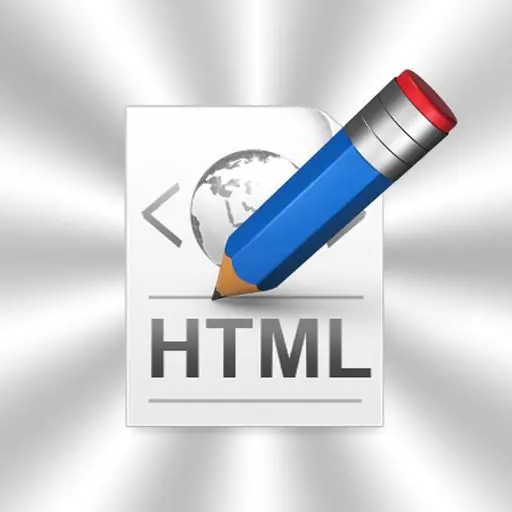- Author Lauren Nevill [email protected].
- Public 2023-12-16 18:48.
- Last modified 2025-01-23 15:15.
When you post on the forums, there is an option to make a plain text link using the post editor. There are, of course, ways to make text a link in relation to the pages of your own site. True, this is a little more complicated - below is described exactly how.

Instructions
Step 1
To make any text a link, you need to enclose it inside the corresponding tag. "Tags" in HTML (HyperText Markup Language) refer to specially written instructions for the browser that make up the source code of a web page. These instructions describe the look and layout of all the elements on the page. The tag that forms the hyperlink consists of two parts (opening and closing) and may look, for example, like this: Text link Here is the opening tag of the link, - the closing one, and "Text link" is the same text that the visitor of the page will see. The opening tag contains information about the address to which the visitor will go when they click the link. This information is called the "attribute" of the tag, and the href attribute is used to indicate the address of the link. If the address is written in such a short form (only the page name or the folder name plus the page name), then the browser will automatically add the address of the current page to it. This version of the record of the address, measured from the current page, is called "relative" and is used only for links to documents within the same site. The addresses of links to other sites are always written in full and are called "absolute". Sample: Text Link
Step 2
Now that you are familiar with the minimum required to write a link, you can compose such a text link and insert it into the page code. To do this, first open the page in the text of which you want to place the link in any editor. If your site is equipped with a management system, then it should provide a page editor that allows you to do this online right in your browser. If the site does not have a management system, then you can use any simple text editor - for example, Notepad. But in this case, you will need to download the page file first, and after finishing editing, download it back.
Step 3
If you use the online editor of the pages of the control system, then after opening the necessary page in it, you will have two options for actions: - if the editor is equipped with a visual editing mode, then you just need to select the necessary text, click on the "Insert link" button on the panel and print it address; - if there is no visual mode (it is sometimes called WYSIWYG - What You See Is What You Get, "what you see is what you get"), then you need to paste the code you prepared in the first step into the source of the page. After that, it remains to save page with the changes made.
Step 4
If you use a regular text editor, then the easiest way to download a page for editing is to use a file manager, which allows you to upload and upload everything you need to the site directly through the browser. It should be in your hosting company's control panel. Most of the site management systems come with it too. Another way to move files to and from the server is a specialized program that uses the FTP data transfer protocol and is called the FTP client. On the web, you can find many options for such programs - both paid and free. This method of downloading a page file is less convenient, since it requires installation, familiarization, and software configuration. In this case, you will need to know the address and password of the FTP server of your site. If not, create it in the hosting control panel. Open the downloaded page in a text editor and paste the HTML code prepared in the first step. Then save the changes and upload the page file back to the server in the same way you downloaded it.






